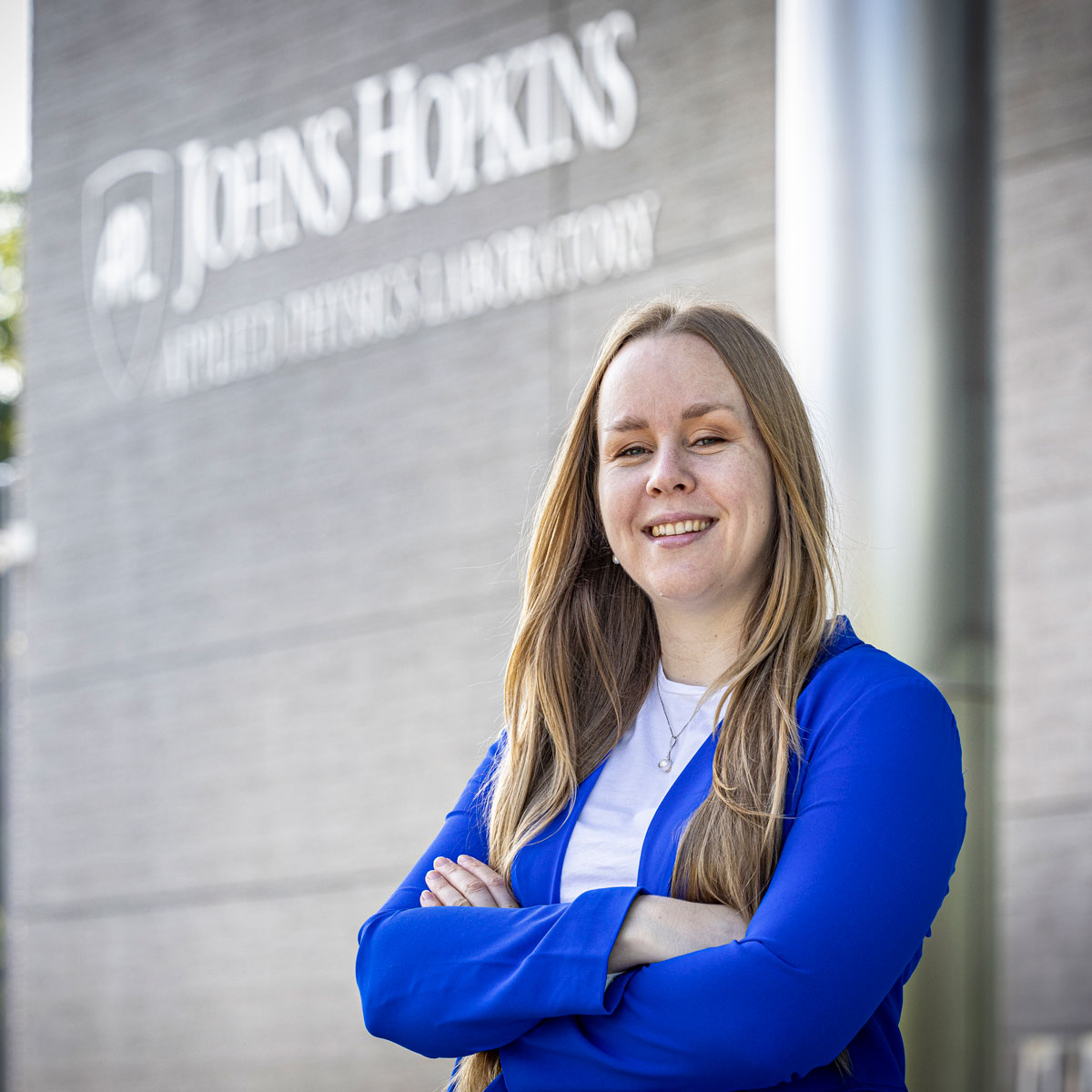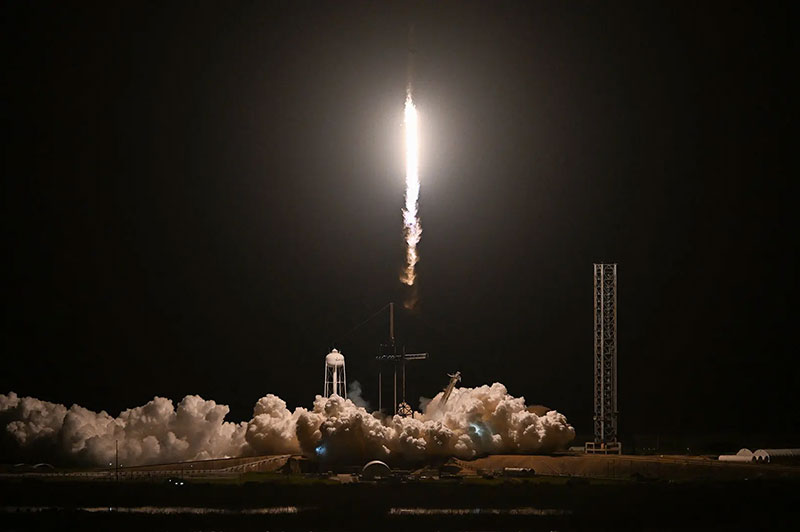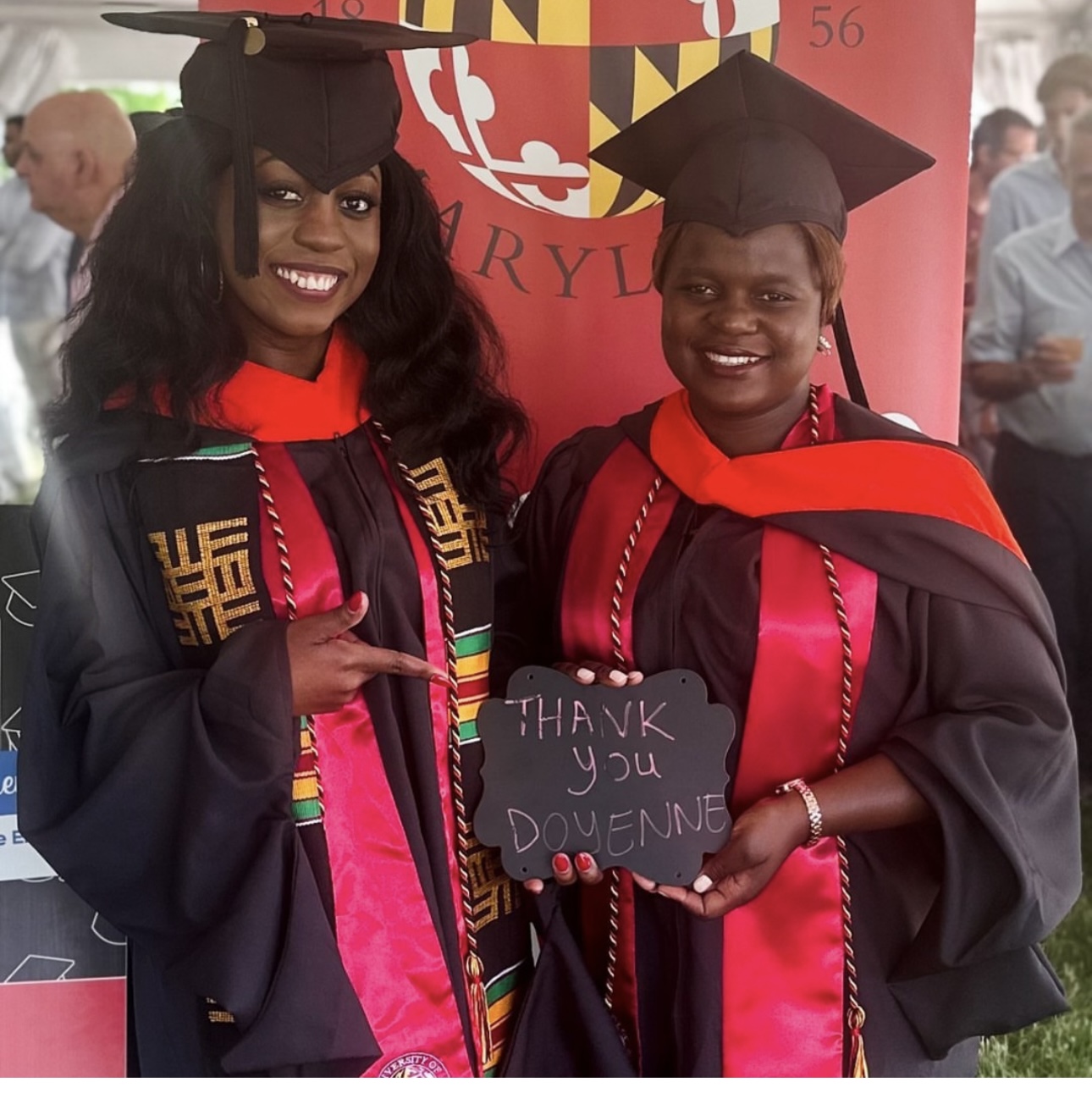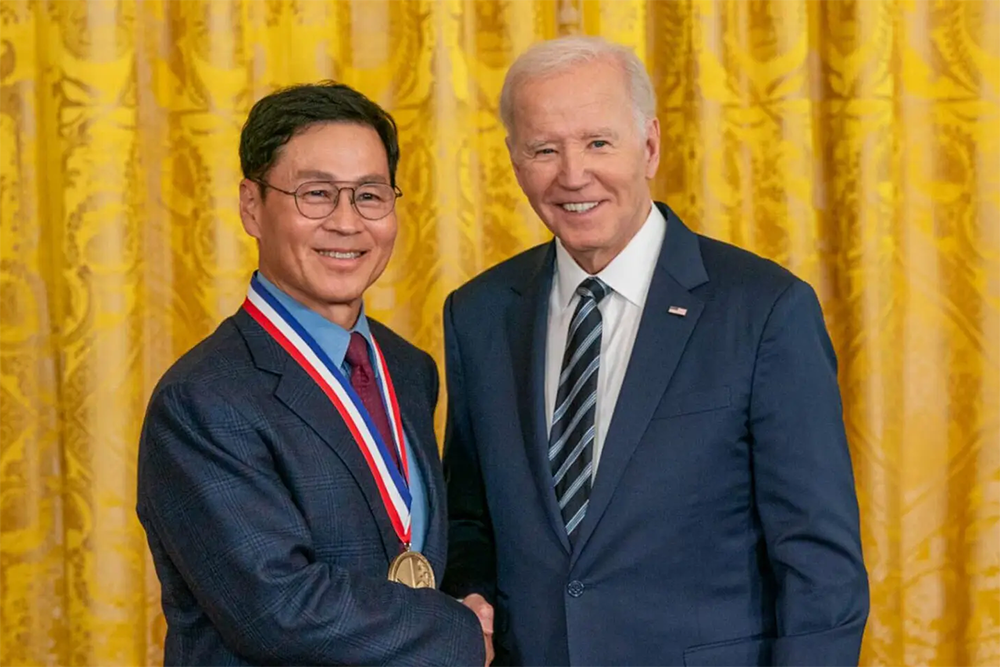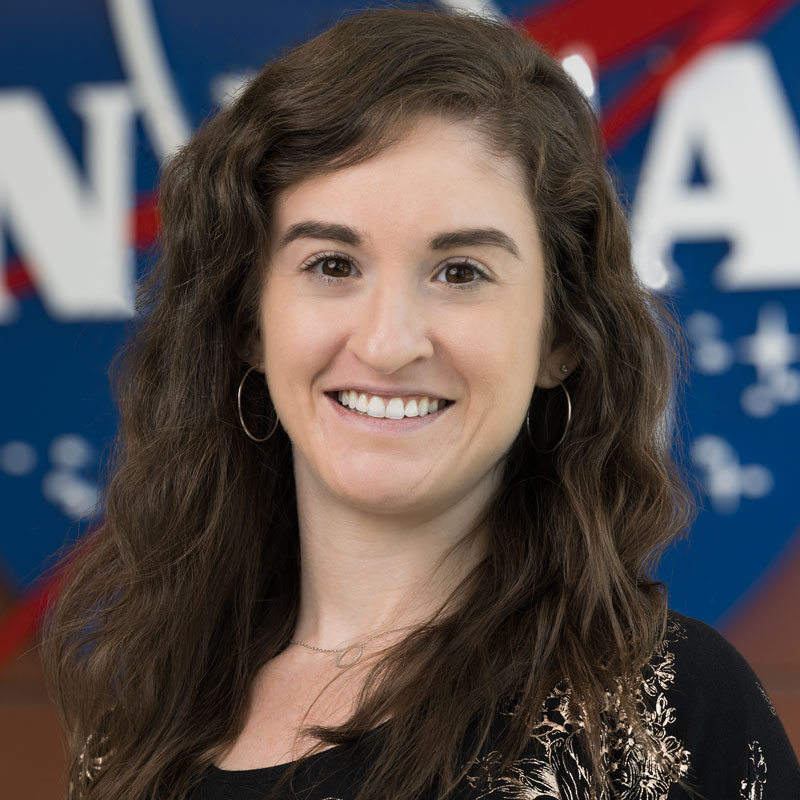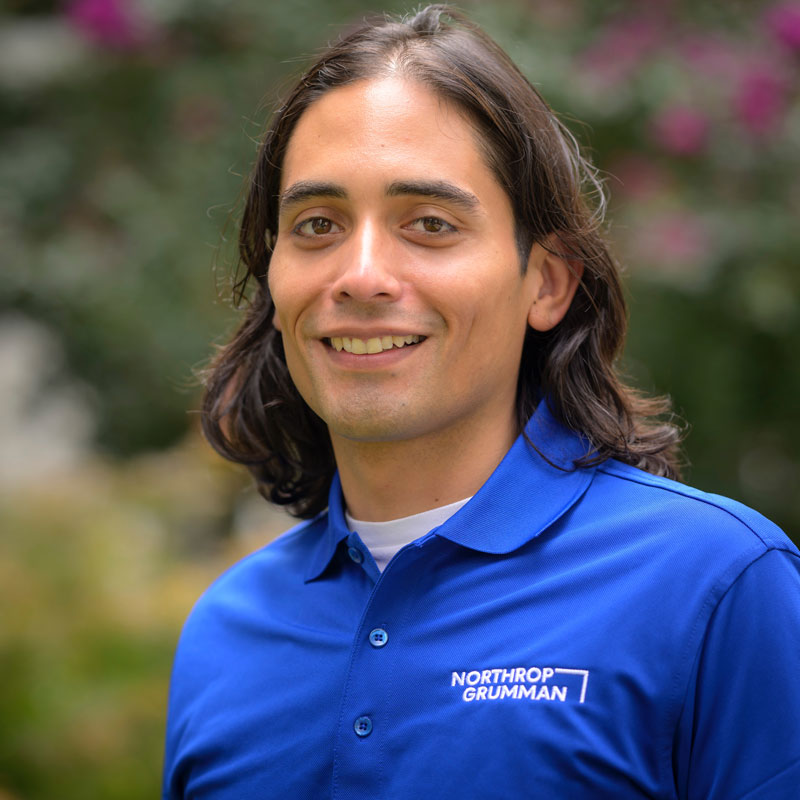News Story
Alum's Book Explores 'Lost Relics' that Spurred the Nuclear Era
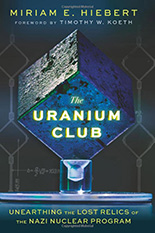
It all began with a mysterious gift that landed on the desk of Tim Koeth, a nuclear physicist and Maryland Engineering researcher with a penchant for nuclear oddities: a cube of uranium metal wrapped in a cryptic note that read, “Taken from Germany from the nuclear reactor Hitler tried to build. Gift of Ninninger.”
What followed was a yearslong quest by Koeth, an assistant professor in the University of Maryland’s A. James Clark School of Engineering, and his student-turned-colleague Miriam “Mimi” Hiebert Ph.D. ’19 to discover the origin of the cube and its place in the high-stakes race between the United States and another would-be nuclear power: Nazi Germany.
In her debut book releasing July 11, “The Uranium Club: Unearthing the Lost Relics of the Nazi Nuclear Program,” Hiebert traverses the twists and turns of the regime’s failed nuclear program as well as the United States’ successful Manhattan Project, revealing the contributions of the men and women at the forefront of the race for nuclear weapons and energy.
We recently spoke to Hiebert, whose research draws on archives and her background in cultural heritage science and engineering. Part treasure hunt, part thrilling historical narrative, the book uncovers and presents compelling—and greatly consequential—stories of science and humanity that launched the world into the modern atomic age.
How did your book project start?
I was in graduate school at the University of Maryland studying materials science and engineering and working in the Maryland University Training Reactor, doing some neutron imaging of stone. (Hiebert’s research focused on using nuclear radiation to better preserve porous items such as stone and glass from water and erosion damage.) That’s when I met Tim, who was the reactor director at the time. He figured out that I like science, but I also really like history and cultural heritage materials. So, he let me in on one of his many, many secrets: He told me everything he’d figured out about the two cubes of uranium metal that had come into his possession. Then he reached under his desk and put one of the cubes in my hands—I was hooked. That started this quest to figure out how these cubes made their way here from thousands of miles away in Germany over 70 years.
What’s the importance of studying historical and cultural relics like the uranium cubes?
Relics let you relate to history and historical figures in a way that’s more powerful than only reading about events. That’s why museums are such powerful places; you can see the tool marks left behind by real people and understand them a little more. You can also collapse a lot of history around a single object. Tim likes to talk about the uranium cube as the motivation behind the development of nuclear weapons; it was the culmination of the German nuclear project, which is what drove the Manhattan Project to unfold so quickly.
What was it like, switching gears from scientific research to historical research for this book?
So many pieces of this story have revolved around the University of Maryland and this area. There are the cubes that wound up here, but there’s also the National Archives, the American Institute of Physics, and the Neils Bohr Library and Archives. All were incredibly important sources of research for this project. And I was very fortunate to participate in the Museum Scholarship and Material Culture program here at Maryland.
I’d had all scientific training until this book project, so I learned a lot. When you’re doing a science experiment, you know approximately what you’re looking to see or not see. With historical research, you don’t necessarily know what you’re looking for until you’re going through it. You don’t have much control of what you’re going to find, and when, but the breakthroughs in historical research feel similar to the breakthroughs in science research. The “aha!” moments are equally exciting.
The book delves into political and cultural figures involved in this nascent atomic era. Whose story is most fascinating to you?
I’m obsessed with Austrian-Swedish physicist Lise Meitner. She was the interim director of the Kaiser Wilhelm Institute for Chemistry in Berlin, having risen through the ranks. She was brilliant. She was mean. She was fabulous. When Austria was annexed by Germany, Meitner, who was of Jewish ancestry, was forced to leave her job and escaped the Nazis, but just barely. She’d been working with another chemist, her dear friend Otto Hahn, on different experiments. She and her nephew ended up writing the first paper on fission—a term Meitner coined. But it was Hahn who received the Nobel Prize a couple years later.
Meitner didn’t do anything else with fission for her entire career. She knew this was going to be a bad technology. She died in England, and her tombstone says: “A physicist who never lost her humanity.”
What other lessons for today’s scientists and engineers does the story of the competing atomic programs provide?
Be willing to work together, to be wrong, and not let your ego get involved in the science. I have the perfect engineering example: German physicist Werner Heisenberg was well-liked and a brilliant person, but he was a total theoretician. He never built anything a day in his life, and he was trying to build nuclear reactor experiments. On the other hand, Kurt Deibner, who was unliked, was an experimentalist—what we’d call an engineer. He had a lot of practical experience, knowing what would work in reality, versus what would make the math look pretty. In the end, the engineer was right. If they’d had more practical experience, [Germany] might have gotten closer to a critical nuclear reactor before the end of the war.
What’s next in this treasure hunt for you? Is there a new book in the works?
If we’re lucky, we might find a few more cubes. Marie Curie’s granddaughter, Helene Langevin-Joliot, a nuclear physicist in her 90s living in Paris, uses her uranium cube as a doorstop. But I think we’re pretty much where we’re going to be with this project.
There were women everywhere in “The Uranium Club” history, but they were rarely named. There were women at the Trinity test (the first detonation of an atomic bomb) and when Chicago Pile-1 (the first operational nuclear reactor) went critical. There’ve been women in every room, but they often don’t get a lot of credit. So I think focusing on that and seeing what that turns into is the next thought.
Adapted from a Maryland Today article written by Rebecca Ruark
Published July 3, 2023

